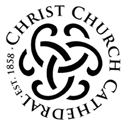News
The Winter Visitation Sermon, Advent 4 ~ December 22, 2024
In the beautiful month of May, in the springtime of the year, the church keeps a feast known as the Visitation of the Blessed Virgin Mary. The gospel reading on that occasion is the one we just heard, the story of pregnant Mary’s visit to her elderly relative Elizabeth, who is herself pregnant with John the Baptist.
Now, at this time of year when the days are shortest and the nights are longest, we hear that visitation story again on the final Sunday of Advent, in preparation for Christmas, which comes in only a few days. We can call today the winter Feast of the Visitation.
What happens? Young Mary, a teenaged girl, has heard the angel’s monumental message that she is to be the mother of the Messiah, the other parent to the Son of God. In an exercise of the bravest faith and submission, she agrees.
Mary agrees, though this pregnancy seems to promise the end of her engagement to Joseph. She agrees, although her people remember well how in the past they would put to death a woman about to marry who was found not to be a virgin.
Mary agrees to this remarkable and scandalous motherhood. It seems she has been brought, all in a rush, to a dark stone wall. But her faith finds a door, her faith finds a door.
One barrier after another collapses in Mary’s life. Now she is on the road to Elizabeth’s home, a house in the hill country. Pregnant women in Mary’s time and place did not travel; they stayed at home. But Mary gets up and goes.
Why does she go? Is it to find refuge with an understanding relative against criticisms thrown against her because of the scandalous circumstances around her pregnancy? We do not know. But the meeting of these two pregnant women is thick with surprises.
It is common for babies to move in the womb in ways their mothers can feel. Sometimes these movements are called kicks. But John in his mother’s womb did much more. He jumped for joy! When Mary called out upon her arrival, John jumped in the womb of old Elizabeth. How startled his mother must have been!
The Holy Spirit then filled Elizabeth, and she cried out to her visitor, “Blessed are you among women, and blessed is the fruit of your womb.”
Theirs is a culture that honors the elderly, but here we have the older woman offering extravagant honor to the younger one, a teenager mysteriously pregnant. Yes, the world is turning upside down! The old era, which Elizabeth represents, has not much time left. The new era, ushered in by Mary, is about to dawn.
“Blessed are you among women, and blessed is the fruit of your womb.” Elizabeth is the first to utter this acclamation, which becomes a favorite Christian devotion down through the centuries.
She then says more. She asks:
Why has it happened that my Lord’s mother has come to visit me? As soon as I heard your greeting, the baby inside me jumped for joy! You’re blessed, Mary, because of the child you carry. You’re blessed, Mary, for believing that what the Lord told you would come true.
Here the older woman does not bless the younger, but recognizes that the younger woman is already superabundantly blessed. Yet we who know what will follow recognize that this blessing is not all springtime. It will have its winter season. A sword of anguish will pierce the heart of blessed Mary. She will cradle the baby at Bethlehem, yet years later she will cradle her dead son at Golgotha.
Suddenly the scene at Elizabeth’s house becomes a sacred opera. It moves into music. Mary does not speak; she sings. And what a song she sings!
We call this song the Magnificat, from the first word in the Latin translation. We also call it the Song of Mary. It is a universe away from any self-indulgent, sentimental ditty. Instead, what we have is an explosive celebration of the God who saves: the one who looks with favor on a humble servant, who does great things, whose name is holy. The God whose mercy is known by those who reverence him, who shows his arm to be mighty, who scatters the proud and throws down the powerful and throws out the rich, who lifts up the lowly, and leads the hungry to a banquet. The one who keeps his promise to our forbearers in faith, whose name is holy, who does great things! This is the God who sets Mary to singing, and maybe, as Herbert O’Driscoll suggests, Mary, pregnant Mary, footsore after trekking up the hillside, not only sings for all she is worth, but starts to dance as well.
Often we Christians don’t get it right about Mary. Protestants and Pentecostals and Anabaptists tend to ignore her, except perhaps at Christmas. Catholics and Orthodox appear sometimes to deify her, exaggerating the honor of she who is already higher than the cherubim. Episcopalians love the Mother of the Lord, but are rather diffident in talking about her. But sometimes we Christians do get it right about Mary. May this be such a moment.
For it seems that, in some mysterious way, reflection on Mary unlocks the door to Christian joy.
That joy rings out in ancient hymns – Greek, Latin, Coptic, Syriac – many of them modeled on Mary’s own song.
It sounds forth in the work of Anglican poets and preachers, among them Henry Vaughn, who calls out:
Bright Queen of Heaven! God’s Virgin Spouse
The glad world’s blessed maid!
Whose beauty tied life to thy house,
And brought us saving aid.
This joy radiates in the bright madonnas of Italy. It shines in stone in medieval cathedrals named for Our Lady.
Yes, reflection on Mary unlocks the door to Christian joy. Mary shares her song with us, asks us to sing the Magnificat. She invites us to delight with her in the God who turns the world upside down, who saves us through this girl’s courage.
Mary always points us to her Son, the one redeemer. Her existence reminds us that we can be as she is: the faithful disciple, the one who brings Christ to birth, the soul espoused to God.
Without such joy, Christianity is ever in danger of becoming less than itself, falling into respectable dullness or mean-spirited fanaticism.
However, where this joy of Mary singing the Magnificat is set free, Christianity becomes confident, the harbinger of an eternal springtime, rich with hope for this world and the next.
We live in a time, my friends, when people ache for such a hope. May we help them find it in the liberating God who is the subject of Mary’s song and the center of Mary’s life.
This sermon was written by the Rev. Charles Hoffacker for Advent 4(C) in 2009.
 Advent IV invites us to reflect on the nearness of Christ’s birth, filling our hearts with anticipation and peace. As we approach the final days of this season of waiting, let us welcome the love and promise of Emmanuel, who is with us now and always.
Advent IV invites us to reflect on the nearness of Christ’s birth, filling our hearts with anticipation and peace. As we approach the final days of this season of waiting, let us welcome the love and promise of Emmanuel, who is with us now and always.
Service Schedule
Sunday
Rite II with Eucharist service – 9:00 AM;
In person, Zoom and Facebook live.
Click here to join Sunday morning Zoom service
Holy Days – Eucharist as announced in the Weekly Update







